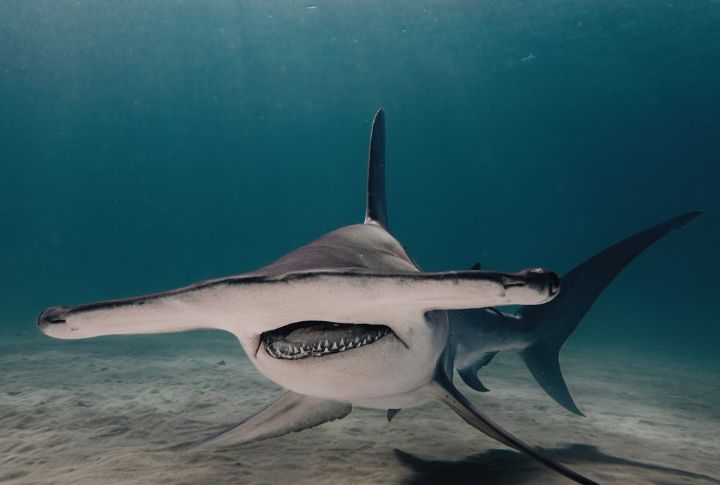
There’s a reason hammerhead sharks tend to leave a lasting impression. With their unmistakable silhouette and calm confidence, they’re unlike anything else in the sea. The more time you spend looking into their world, the more unexpected details surface. Here are 10 things you’ll want to know.
Their Eyes Work In Tandem

Eyes positioned far apart might seem poorly suited for forward vision, but researchers found the opposite. In fact, their oddly spaced eyes give them excellent forward vision and almost 360-degree coverage, which helps them spot prey and predators from nearly every angle.
Schools Are Their Social Scene
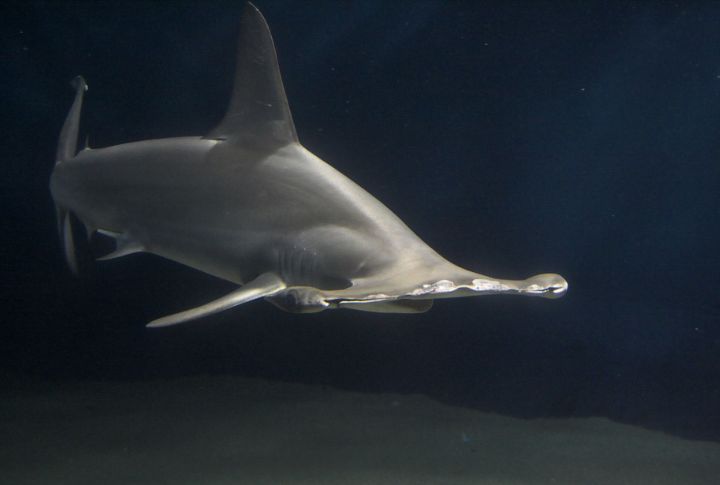
Unlike many shark species that swim solo, hammerheads often gather in groups. Certain schools include hundreds of individuals, especially during the day. These massive gatherings happen near seamounts or coastlines and may serve different purposes, like improving chances of mating or helping them follow areas rich in prey.
They Can Sense Electric Fields
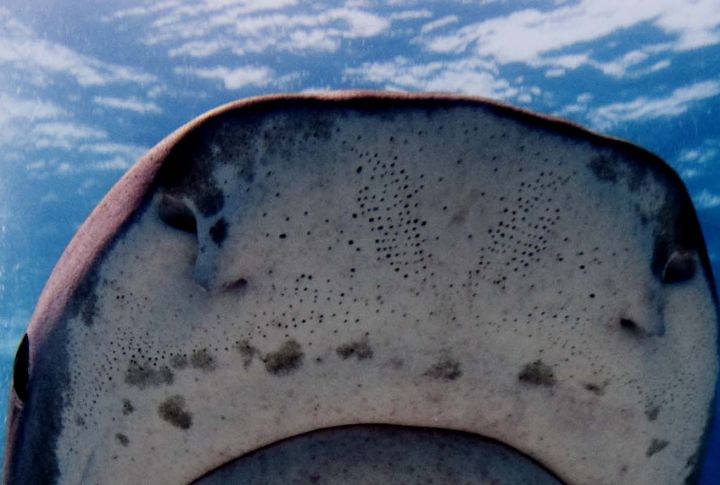
Tiny pores around the hammerhead’s head serve a powerful purpose. Known as ampullae of Lorenzini, these sensory organs detect weak electric fields produced by other creatures. Even a fish buried in the sand gives off enough of a signal for the shark to track it with precision.
There’s Not Just One Kind
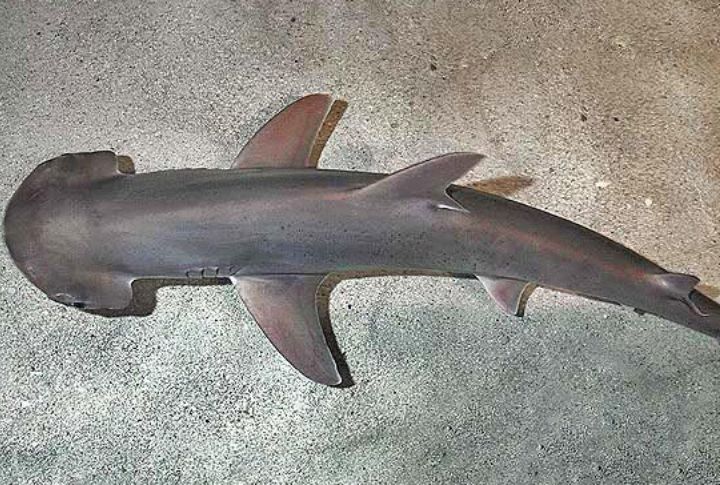
People often picture one hammerhead, but there are nine different species. From the great hammerhead to the smaller bonnethead, each has unique quirks. Some grow over 13 feet long, while others stay under five. Their heads vary in shape, too, from broad and flat to gently curved.
Bonnetheads Love A Side Of Seagrass
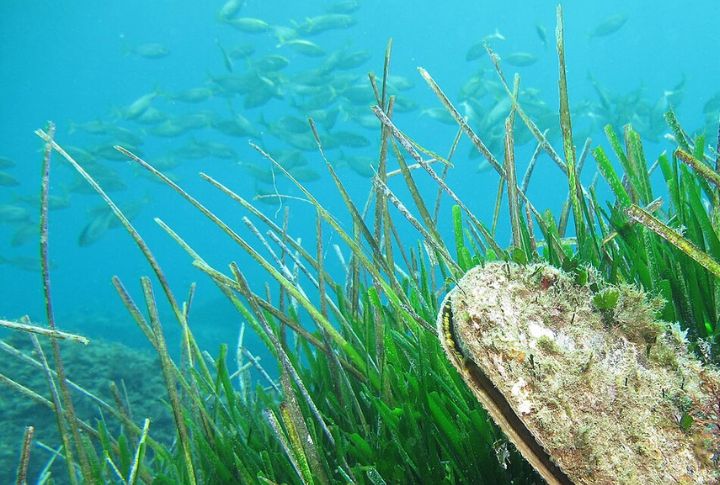
Most sharks are strict meat-eaters, but the bonnethead breaks that mold. This smaller hammerhead species eats seagrass regularly and digests it, too. Studies confirmed they can process plant matter for energy, making them the first known omnivorous shark. What started as a fluke turned out to be a dietary strategy.
They Give Birth To Live Young
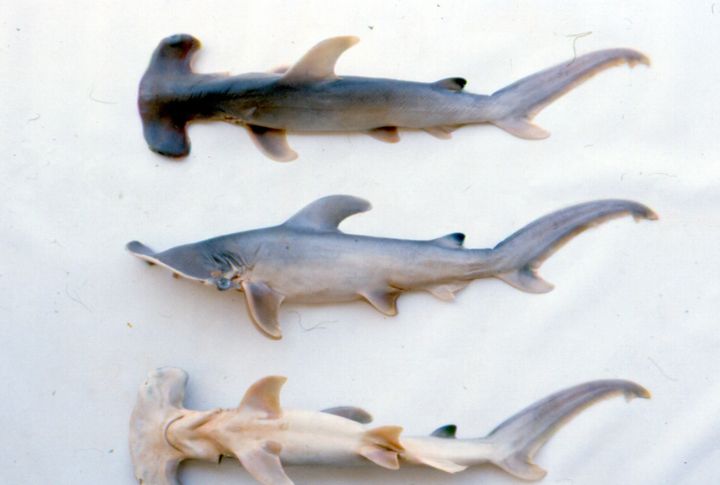
Hammerhead sharks don’t lay eggs. They give birth to live pups, with gestation lasting 8 to 12 months, depending on the species. Litter sizes vary—scalloped hammerheads can produce 12 to 41 pups, while great hammerheads may have as many as 55. Newborns swim off independently soon after birth.
Warm Waters Are Their Favorite

Several types of hammerheads stick to tropical and warm temperate seas, usually between 72 and 82 degrees Fahrenheit. They favor coastlines and continental shelves, though a few, such as the smooth hammerhead, stray into cooler zones or venture offshore seasonally.
They Can Tan In The Sun

Long hours near the surface come with a side effect—sunburn. Scalloped hammerheads have been observed developing tans from UV exposure, both in the wild and under lab conditions. Their skin darkens over time as a natural response to sunlight, much like the melanin-driven change in humans.
Their Bites Aren’t Built For Big Prey

Despite their size and rugged appearance, most hammerheads don’t take down giant prey. Their narrow jaws are better suited to grabbing smaller creatures. Stingrays, octopuses, smaller fish, and crustaceans are their go-to meals. A few hammerheads focus almost entirely on bottom-dwelling prey.
Migration Patterns Are Pretty Impressive
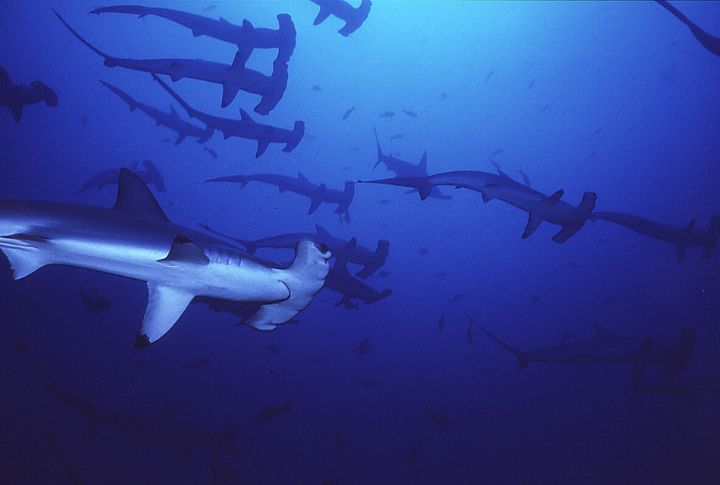
Scalloped hammerheads are recognized for long-distance travel. Some populations migrate over 1,000 miles to reach breeding or feeding grounds. These movements often follow predictable paths tied to ocean currents, temperature changes, and prey movement. Researchers have used satellite tags to chart their movements across entire ocean regions.

